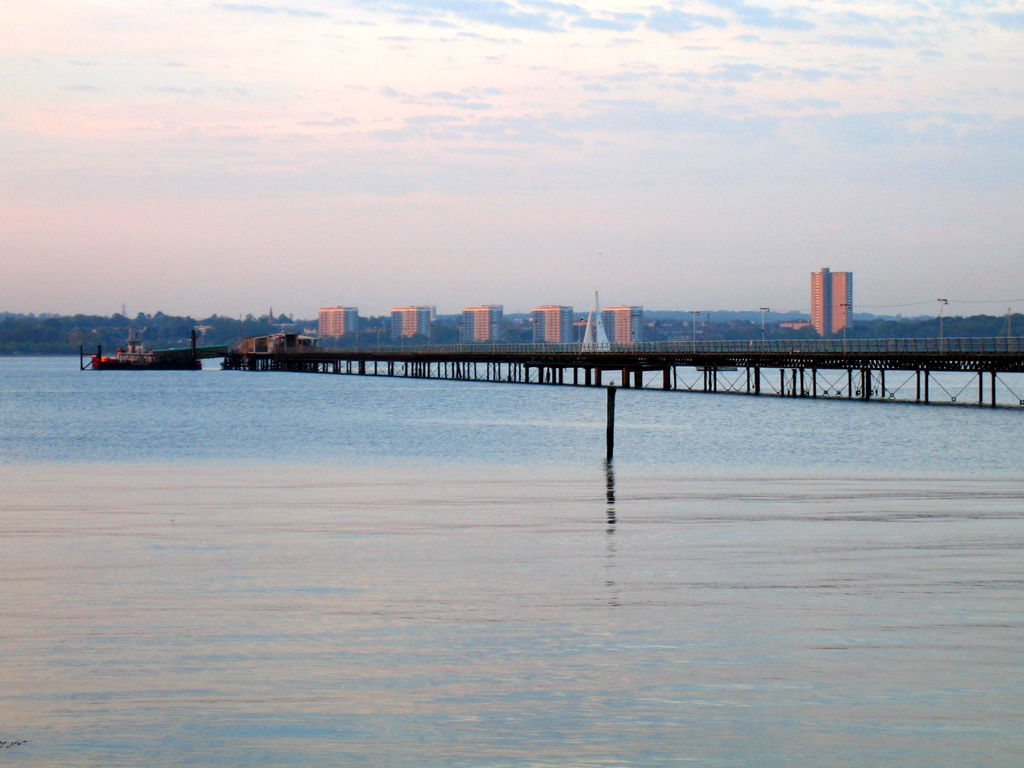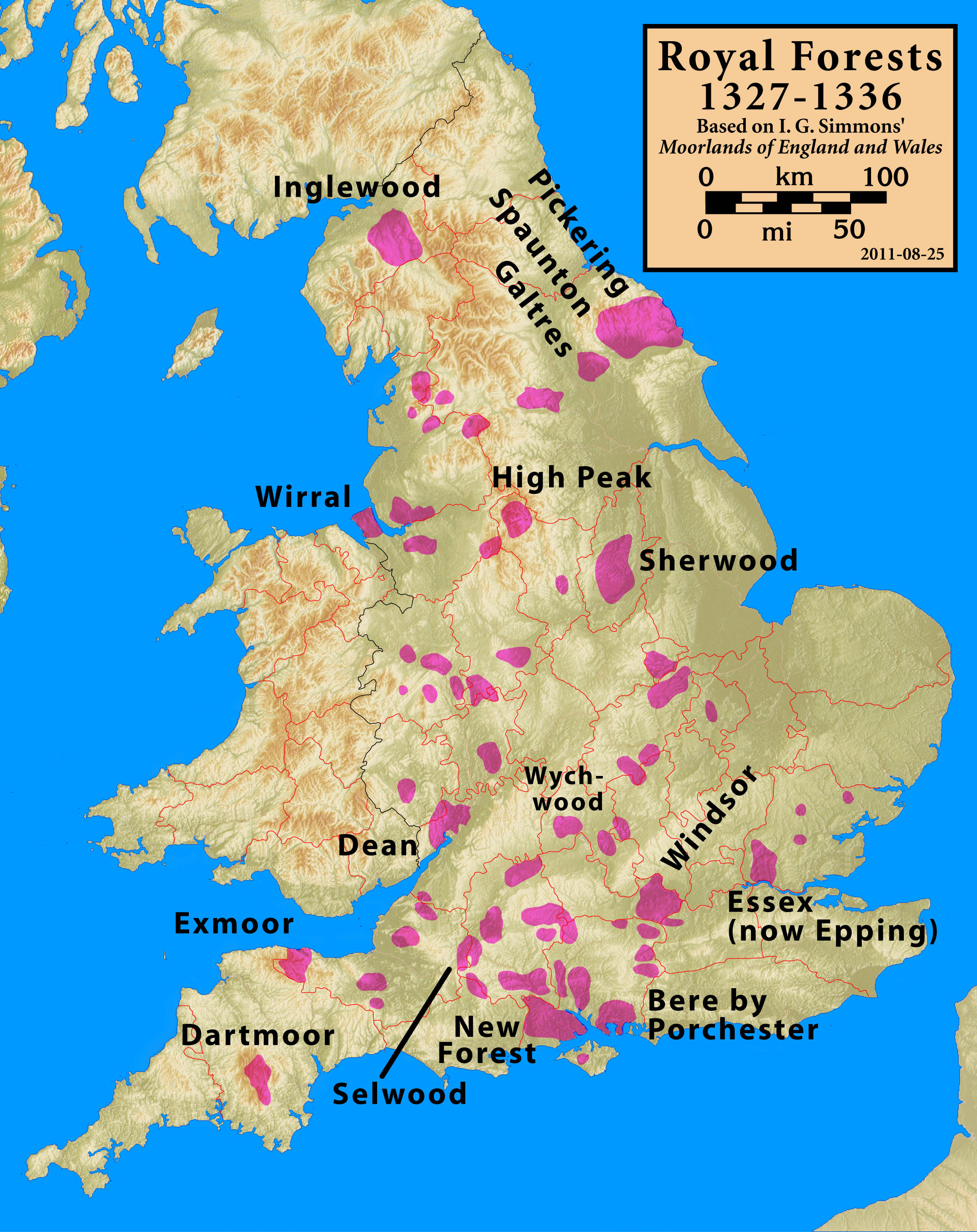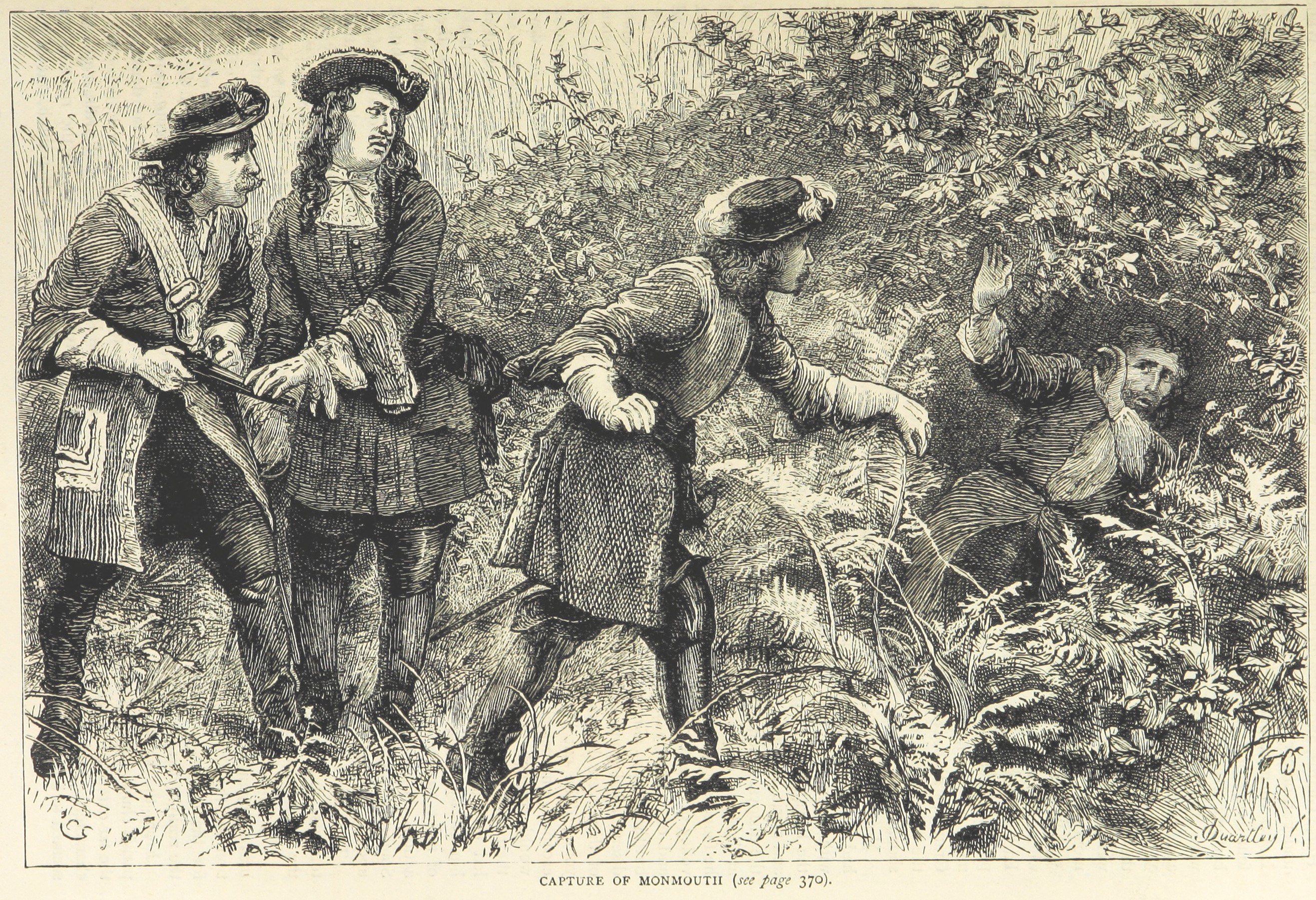|
Dibden
Dibden is a small village in Hampshire, England, which dates from the Middle Ages. It is dominated by the nearby settlements of Hythe and Dibden Purlieu. It is in the civil parish of Hythe and Dibden. It lies on the eastern edge of the New Forest in a valley, which runs into Southampton Water. History The name "Dibden" is from the Old English for "deep valley", although the village is only slightly lower than the land around it. It is listed in the Domesday Book of 1086 as "Depedene" and was held by Odo of Winchester. Prior to 1066 it had been held by "Ketil the Steersman" from King Edward. There was a saltpan and a fishery in the manor. The overlordship of Dibden belonged in the 12th century to Reynold de St. Valery, who died in 1166, and his son Bernard de St. Valery, who was killed at the siege of Acon in 1192, was probably the Bernard who was lord of Dibden in 1167. Descending with his granddaughters to Robert Count of Dreux, it fell, with the rest of the honour of ... [...More Info...] [...Related Items...] OR: [Wikipedia] [Google] [Baidu] |
Dibden Purlieu
Dibden Purlieu () is a village situated on the edge of the New Forest in Hampshire, England. The village merges with the nearby town of Hythe. It is in the civil parish of Hythe and Dibden. The approximate population is around 4000 people. The regular Bluestar bus services provide Purlieu's quickest link with the city of Southampton. Dibden Purlieu is twinned with Mauves-sur-Loire, France. History Dibden Purlieu was in the parish of Dibden, referred to in the Domesday Book of 1086 as Deepdene, "dene" being an Anglo-Saxon word for valley. Purlieu is a Norman-French word meaning "the outskirts of a forest" – a place free from forest laws. In this particular case Dibden Purlieu was land removed from the New Forest in the 14th century when the forest boundaries were established by perambulations about 1300. In practice the king retained or claimed, certain rights in the area, and the activities of the royal foresters in enforcing forest law there were a matter of great rese ... [...More Info...] [...Related Items...] OR: [Wikipedia] [Google] [Baidu] |
Hythe And Dibden
Hythe () is a town in Hampshire, England. It is located by the shore of Southampton Water, and has a ferry service connecting it to Southampton. Hythe has a shopping area, a pier, and a marina for yachts. History The name Hythe means landing-place or haven. Hythe is recorded in a Parliamentary roll from 1293.squadron. Hythe was a village up to the 1950s, but the expansion of Fawley Refinery led to a demand for more houses for workers, and Hythe and Dibden Purlieu were allowed to expand into a small town. In 1983, following the growth of Hythe, the parish of Dibden was renamed to Hythe and Dibden, to reflect the importance of Hythe as a new focal point of the Parish.What is the Parish Council , Hythe and Dibden Parish Council Construction of Hythe Marina began in 1985. [...More Info...] [...Related Items...] OR: [Wikipedia] [Google] [Baidu] |
Hythe, Hampshire
Hythe () is a town in Hampshire, England. It is located by the shore of Southampton Water, and has a ferry service connecting it to Southampton. Hythe has a shopping area, a pier, and a marina for yachts. History The name Hythe means landing-place or haven. Hythe is recorded in a Parliamentary roll from 1293.squadron. Hythe was a village up to the 1950s, but the expansion of Fawley Refinery led to a demand for more houses for workers, and Hythe and Dibden Purlieu were allowed to expand into a small town. In 1983, following the growth of Hythe, the parish of Dibden was renamed to Hythe and Dibden, to reflect the importance of Hythe as a new focal point of the Parish.What is the Parish Council , Hythe and Dibden Parish Council Construction of Hythe Marina began in 1985. ... [...More Info...] [...Related Items...] OR: [Wikipedia] [Google] [Baidu] |
Southampton Water
Southampton Water is a tidal estuary north of the Solent and the Isle of Wight in England. The city of Southampton lies at its most northerly point, where the estuaries of the River Test and River Itchen meet. Along its salt marsh-fringed western shores lie the New Forest villages of Dibden, Hythe and Fawley, and the Fawley Refinery. On the slightly steeper eastern shore are the Southampton suburb of Weston, the villages of Netley and Hamble-le-Rice, and the Royal Victoria Country Park. To the south, Southampton Water enters the Solent between Calshot Spit and Hill Head. Southampton Water is an estuary with major potential for land use conflicts. An area of urban development (the Waterside) runs in the narrow band of land between Southampton Water and the New Forest National Park. Villages such as Marchwood, Hythe, Dibden Purlieu, Holbury and Fawley have all experienced significant growth. Geography Geographically, Southampton Water is classified as a ria, or dro ... [...More Info...] [...Related Items...] OR: [Wikipedia] [Google] [Baidu] |
New Forest East (UK Parliament Constituency)
New Forest East is a constituency in Hampshire represented in the House of Commons of the UK Parliament since its creation in 1997 by Julian Lewis of the Conservative Party. Constituency profile The industrial element and mid-density housing of the Southampton Water strip results in some or all Labour and Liberal Democrat councillors in this area at the local district elections from creation to date, and contributes strongly towards the latter party's peak performance leaving the winner a 9% majority in 2001. This contrasts with the Conservative winner's greatest majority to date in 2017 of 42.8% of the votes over his nearest rival which ranks Lewis among the top 10% of his party's MPs by majority. The history of district itself is typical of inherent suburban and retiree districts as it was largely created for the preservation of the National Park and to provide contrast in planning and ethos to the City of Southampton and the Bournemouth conurbation. The constituency covers ... [...More Info...] [...Related Items...] OR: [Wikipedia] [Google] [Baidu] |
New Forest
The New Forest is one of the largest remaining tracts of unenclosed pasture land, heathland and forest in Southern England, covering southwest Hampshire and southeast Wiltshire. It was proclaimed a royal forest by William the Conqueror, featuring in the Domesday Book. It is the home of the New Forest Commoners, whose ancient rights of common pasture are still recognised and exercised, enforced by official Verderer (New Forest), verderers and Agister (New Forest), agisters. In the 18th century, the New Forest became a source of timber for the Royal Navy. It remains a habitat for many rare birds and mammals. The boundaries of the forest have varied over time and depend on the purpose of delimiting them. It is a biological and geological Site of Special Scientific Interest. Several areas are Geological Conservation Review sites, including Mark Ash Wood, Shepherd’s Gutter, Cranes Moor, Studley Wood, and Wood Green. There are also a number of Nature Conservation Review sites. I ... [...More Info...] [...Related Items...] OR: [Wikipedia] [Google] [Baidu] |
New Forest (district)
New Forest is a local government district in Hampshire, England. Its council is based in Lyndhurst, although the largest town is Totton. The district also includes the towns of Fordingbridge, Lymington, New Milton and Ringwood. The district is named after and covers most of the New Forest National Park, which occupies much of the central part of the district. The main urban areas are around the periphery of the forest. The district has a coastline onto the Solent to the south and Southampton Water to the east. The neighbouring districts are Bournemouth, Christchurch and Poole, Dorset, Wiltshire, Test Valley, Southampton and Eastleigh (across Southampton Water). The district also faces the Isle of Wight across the Solent. History The district was created on 1 April 1974 under the Local Government Act 1972, covering the whole area of two former districts and most of a third, which were all abolished at the same time: *Lymington Municipal Borough * New Forest Rural District ... [...More Info...] [...Related Items...] OR: [Wikipedia] [Google] [Baidu] |
James Scott, 1st Duke Of Monmouth
James Scott, 1st Duke of Monmouth, 1st Duke of Buccleuch, (9 April 1649 – 15 July 1685) was an English nobleman and military officer. Originally called James Crofts or James Fitzroy, he was born in Rotterdam in the Netherlands, the eldest illegitimate son of Charles II of England with his mistress Lucy Walter. The Duke of Monmouth served in the Second Anglo-Dutch War and commanded English troops taking part in the Third Anglo-Dutch War before commanding the Anglo-Dutch brigade fighting in the Franco-Dutch War. He led the unsuccessful Monmouth Rebellion in 1685, an attempt to depose his uncle King James II and VII. After one of his officers declared Monmouth the legitimate king in the town of Taunton in Somerset, Monmouth attempted to capitalise on his Protestantism and his position as the son of Charles II, in opposition to James, who had become a Roman Catholic. The rebellion failed, and Monmouth was beheaded for treason on 15 July 1685. Biography Parentage and early life ... [...More Info...] [...Related Items...] OR: [Wikipedia] [Google] [Baidu] |
Battle Of Sedgemoor
The Battle of Sedgemoor was the last and decisive engagement between forces loyal to James II and rebels led by the Duke of Monmouth during the Monmouth rebellion, fought on 6 July 1685, and took place at Westonzoyland near Bridgwater in Somerset, England, resulting in a victory for the English army. It was the final battle of the Monmouth Rebellion and followed a series of skirmishes around south-west England between the rebel forces of the Duke of Monmouth, and the Royal Army. Victory went to the Government and about 500 prisoners fell into their hands. Monmouth escaped from the battlefield but was captured, taken to London and executed nine days later. Many of Monmouth's supporters were tried during the Bloody Assizes. Many were transported abroad, while others were executed by drawing and quartering. Background It was the final battle of the Monmouth Rebellion, by which the rebel James Scott, 1st Duke of Monmouth, attempted to seize the English throne from his uncle ... [...More Info...] [...Related Items...] OR: [Wikipedia] [Google] [Baidu] |
Henry VII Of England
Henry VII (28 January 1457 – 21 April 1509), also known as Henry Tudor, was King of England and Lord of Ireland from his seizure of the crown on 22 August 1485 until his death in 1509. He was the first monarch of the House of Tudor. Henry was the son of Edmund Tudor, 1st Earl of Richmond, and Lady Margaret Beaufort. His mother was a great-granddaughter of John of Gaunt, an English prince who founded the Lancastrian cadet branch of the House of Plantagenet. His father was the half-brother of the Lancastrian king Henry VI. Edmund Tudor died three months before his son was born, and Henry was raised by his uncle Jasper Tudor, a Lancastrian, and William Herbert, a supporter of the Yorkist branch of the House of Plantagenet. During Henry's early years, his uncles and the Lancastrians fought a series of civil wars against the Yorkist claimant, Edward IV. After Edward retook the throne in 1471, Henry spent 14 years in exile in Brittany. He attained the throne when his f ... [...More Info...] [...Related Items...] OR: [Wikipedia] [Google] [Baidu] |
James Harris, 1st Earl Of Malmesbury
James Harris, 1st Earl of Malmesbury (21 April 1746 – 21 November 1820), was an English diplomat. Early life (1746–1768) Born at Salisbury, the son of James Harris, an MP and the author of ''Hermes'', and Elizabeth Clarke of Sandford, Somerset.H. M. Scott, �Harris, James, first earl of Malmesbury (1746–1820)��, ''Oxford Dictionary of National Biography'', Oxford University Press, 2004; online edn, May 2009, accessed 7 August 2011. He was educated at Winchester, at Merton College, Oxford and did Law and History at the University of Leiden (1765-1767). Early diplomatic career: Spain (1768–1771) Harris arrived in Spain in December 1768 and became secretary to the British embassy at Madrid, and was left as ''chargé d'affaires'' at that court on the departure of Sir James Grey in August 1769 until the arrival of George Pitt, afterwards Lord Rivers. This interval gave him his opportunity; he discovered the intention of Spain to attack the Falkland Islands, and was instrume ... [...More Info...] [...Related Items...] OR: [Wikipedia] [Google] [Baidu] |
James Harris (grammarian)
James Harris, FRS (24 July 1709 – 22 December 1780) was an English politician and grammarian. He was the author of ''Hermes, a philosophical inquiry concerning universal grammar'' (1751). Life James Harris was born at Salisbury, Wiltshire, the son of James Harris (1674–1731) by his second marriage to Elizabeth (c. 1682–1744), daughter of Anthony Ashley Cooper, 2nd Earl of Shaftesbury. He was educated at the Salisbury Cathedral School, and Wadham College, Oxford. On leaving university he was entered at Lincoln's Inn as a student of law, though he was not intended for the Bar. The death of his father in 1733 brought him an independent fortune and Malmesbury House in Salisbury's Cathedral Close. Harris became a county magistrate. He was Member of Parliament for Christchurch from 1761 until his death, and Comptroller to the Queen from 1774 to 1780. He held political office under George Grenville: in January 1763 he became a lord of the admiralty, and in April that y ... [...More Info...] [...Related Items...] OR: [Wikipedia] [Google] [Baidu] |





